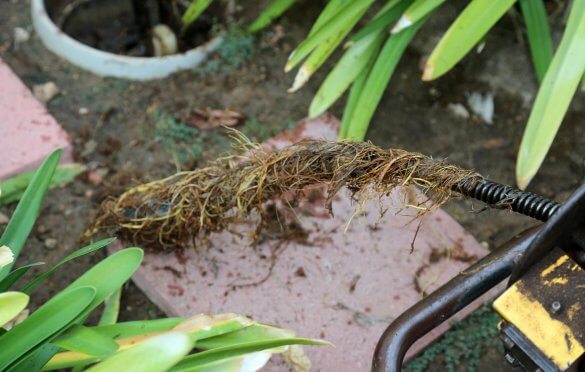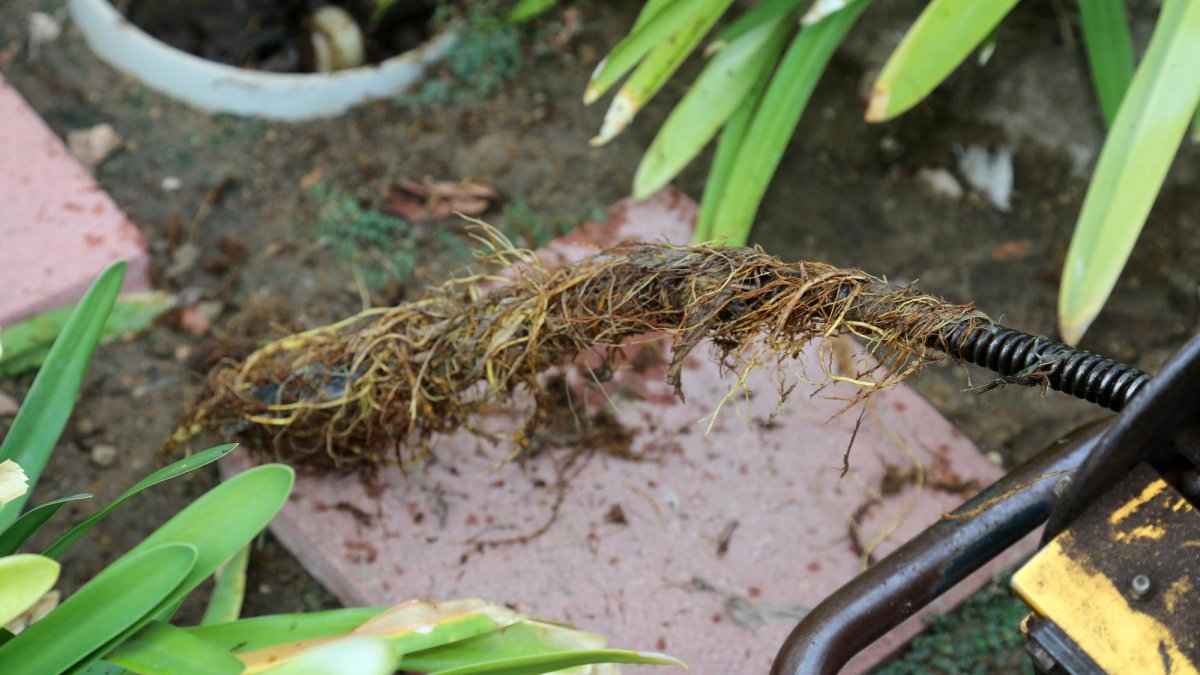
Clogged and blocked drains can be an absolute headache for homeowners. When roots find their way into your plumbing system, they can cause major damage and be very challenging to remove. Fortunately for most homeowners, there are methods to eliminate these pesky roots in your drains before turning to a professional. Let’s discuss methods you can use to get rid of roots in your drain systems at any property you own.
Why Do Tree Roots Block Sewers?
The problem of tree roots blocking and damaging sewer lines is especially true for older sewer systems in residential neighbourhoods since trees planted close to homes generate their roots towards the water source. When it gets there, the roots keep growing larger and thicker, wrapping around pipes and causing blockages within them.
Signs Of Roots in Drain Pipes
- Slow Or Gurgling Drains: If water drains slowly down the drain, this could be a sign that roots are blocking the drain. The noise the water makes as it goes down could also be telling; if it’s gurgling or bubbling, this could indicate roots.
- Toilet Frequently Backs Up: If the toilet backs up often, that could be a sign of tree roots in the drain pipe. A backed-up toilet will cause wastewater to flow out of the bowl or overflow.
- Strong Odours:Overgrown roots can also come with an unpleasant pungent odour. Such smells shouldn’t be ignored; dealing with them quickly is essential for sanitation reasons.
- Sinkholes:Sinkholes is a hole in the ground that forms due to erosion and the breakdown of underground structures. If you notice a sinkhole or spot one forming in your yard, tree roots may have made their way into your pipes and are causing blockages.
- Rapidly Growing Trees:Rapidly growing tree roots can be a major problem for drain pipes. If left unchecked, the roots will continue to grow and expand, eventually entering your home’s sewer lines and blocking off water flow.
DIY Solutions
- Copper Sulphate
Copper sulphate breaks down the proteins in the roots, thus killing the root from the inside and preventing regrowth. You should follow proper safety precautions and instructions when working with this chemical. Using this substance in non-metal drain lines, like PVC or fibreglass, is not advised because it can corrode those materials. Additionally, large doses of copper sulphate could cause environmental damage if not properly disposed of.
- Salt
Salt is a powerful and inexpensive way to get rid of roots from your drain pipes. You can either purchase sodium hydroxide, lye or caustic soda in big crystals at a local hardware store or simple cooking salt. Pour one cup of salt into each drain with stagnated water. Let the salt sit for an hour, and come back to flush the drains with running water from your faucet. The same process could be repeated periodically to prevent root regrowth in and around your pipes.
Professional Methods
Mechanical Auger Or Rooter
You may need to contact a professional drain system cleaner if the DIY solutions above fail. A professional plumber will use a mechanical auger or rooter to remove any accumulated roots in your drain pipes physically. A rooter works by spinning a rotating cutting head with sharp blades at the end of a flexible cable and pushing it through the pipes.
Hydro-Jetting
Hydro-jetting involves flushing high-pressure streams of water through the affected drain pipes to remove obstructions like tree roots or other built-up materials safely. This destroys stubborn blockages like thick tree roots naturally and effectively without causing damage to your existing piping system.
Piper Repair Or Replacement
With a significant break in the piping, complete replacements of the pipes might be necessary. A professional plumber and get an accurate analysis and give your more answers on how to proceed.
Conclusion
Tree roots invading your drain pipes can be a huge headache if not dealt with. DIY solutions can effectively remove roots from your piping system. However, if these solutions fail, it is best to hire a professional. Prevention is always better than a cure, so try to implement preventive measures to avoid any future issues.
Andres Walsh
Related posts
Stay connected
- How LoveOn Chat Is Becoming the Most Versatile AI Companion for Digital UsersThe internet keeps shifting toward hyper-personal interaction, and AI companions are at the center of this shift. What used to be simple chatbots are now evolving into emotionally aware, adaptive, and multi-functional digital partners. Among the new generation of platforms, LoveOn Chat is becoming one... The post How LoveOn Chat Is Becoming the Most Versatile […]

